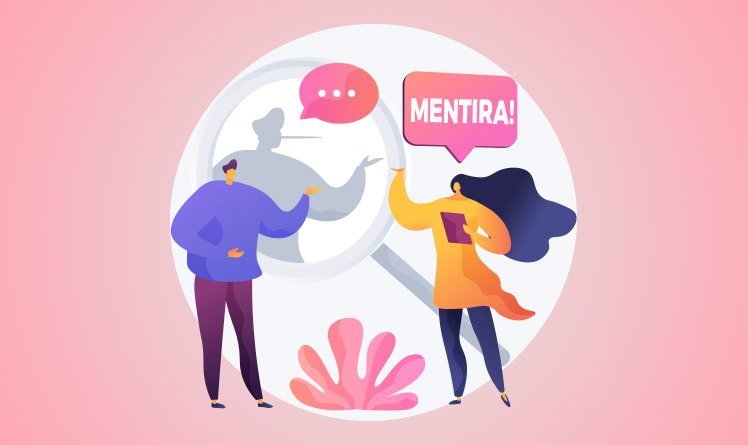Nonverbal language: what it is and how to use it

|
Getting your Trinity Audio player ready...
|
Human communication is a complex skill that goes beyond spoken and written words. Nonverbal language, also known as nonverbal communication, plays a crucial role in how we express ourselves and understand others.
Through gestures, facial expressions, body posture and tone of voice, we convey a myriad of information, complementing or even contradicting our words. In this article, we will explore what nonverbal language is, its importance, how to use it effectively and much more. Get ready to discover a new world of communication!
What is nonverbal language?
Nonverbal language refers to communication that occurs without the use of words. This includes gestures, facial expressions, postures, body movements, and even the physical space between people. In other words, it is anything that communicates a message without us having to verbalize it.
The importance of nonverbal language in human communication
Nonverbal language is an intrinsic part of human communication, responsible for transmitting meanings and emotions that we often cannot express with words alone.
Studies show that over 90% of communication is nonverbal, highlighting its relevance in all social and professional interactions.
After all, by combining gestures, facial expressions, and intonation, we can reinforce our words and make our communication more impactful. Likewise, by interpreting other people’s nonverbal communication, we gain valuable insights into their real thoughts and feelings, going beyond what they are verbalizing.
On the other hand, nonverbal language can vary significantly between cultures. So what is considered a friendly gesture in one culture may be offensive in another. So when interacting with people from different cultural backgrounds, it is essential to be aware of these differences and adapt your communication accordingly.
The key elements of nonverbal language
To understand and use nonverbal language effectively, it is essential to know its key elements. Some of the main components include:
1. Facial expressions
Our faces are capable of expressing a wide range of emotions, such as happiness, sadness, anger, surprise and fear. Therefore, recognizing and interpreting these expressions is essential to truly understanding what someone is communicating.
In this context, micro facial expressions are an important point to highlight. These are quick, involuntary and universal facial expressions. They are very quick and usually appear when we want to hide our real emotions at that moment. Therefore, they usually last from a quarter of a second to half a second.
Studies in this area were introduced in the 1970s and scientific evidence on the microexpressions were ratified by studies of Paul Ekman, which proved the 7 primary and universal emotions: Anger, happiness, sadness, fear, contempt, surprise and disgust.
2. Gestures
Gestures are movements of the hands and arms that can emphasize or complement what we are saying. For example, when talking about something big, we might open our arms to illustrate the idea. However, it is important to remember that gestures can have different meanings in different cultures, unlike microexpressions, which are primary and universal.
3. Body posture
Furthermore, the way we position ourselves and move reveals a lot about our confidence, interest, and comfort level in a situation. An example of this is hunched postures and head down postures, which are associated with sadness or depression, as opposed to postures with head up and chest out, which are more associated with confidence. Body posture analysis is often used, especially during meetings and job interviews.
4. Tone of voice
In addition to the words we use, the intonation and rhythm with which we speak can convey emotions, such as sarcasm, enthusiasm or uncertainty. They can also show nervousness, confidence and shyness, for example. These are very subtle changes, where even silence can have meaning.
5. Eye contact
Eye contact is crucial in nonverbal communication. It can convey interest, sincerity, and trust. However, too much eye contact can be interpreted as intimidating, while too little can be seen as disinterest. Finding the right balance is essential.
6. Proxemics
Proxemics refers to the use of space in social interactions. The distance we maintain between ourselves and others can indicate levels of intimacy and comfort. For example, in a professional setting, maintaining an appropriate distance can convey respect, while in a more personal context, greater proximity can indicate friendship.
Using nonverbal language in everyday life
Nonverbal communication can be applied in many ways in our daily lives, whether in the personal or professional sphere.
Public presentations
When speaking in public, a confident posture and appropriate gestures can increase credibility and audience interest, making the presentation more captivating.
Job interviews
During an interview, it is essential to demonstrate confidence through appropriate eye contact and a firm handshake, which can be just as important as the answers given verbally.
Interpersonal relationships
When communicating with friends, family and colleagues, being aware of nonverbal language can prevent misunderstandings and strengthen emotional bonds.
Improving communication
To improve your communication, start paying attention to your own nonverbal language. Ask yourself, “What is my body saying?” and “Am I sending the message I really want to convey?” Also, pay attention to other people’s nonverbal cues to better understand their emotions and intentions.
Developing empathy
Empathy is a crucial skill in any interaction, so pay attention to other people’s nonverbal language. This way, you can connect more deeply and respond more appropriately. This not only improves communication, but also strengthens relationships.
Dealing with Conflicts
During conflicts, nonverbal communication can be a powerful tool. Maintaining an open posture and using calm gestures can help de-escalate the situation. Additionally, listening attentively and demonstrating understanding through facial expressions can make it easier to resolve disagreements.
Benefits of conscious use of nonverbal language
More effective communication
Effective communication goes beyond words. Studies show that about 93% of communication is nonverbal. This means that when we interact, most of the message we convey comes from how we behave rather than what we actually say.
Therefore, understanding and mastering non-verbal language can make a difference in various situations, such as job interviews, presentations and even in personal relationships.
Transmission of emotions and empathy
Through nonverbal language, it is possible to express emotions more authentically and convey empathy to others. This helps to strengthen emotional bonds and create more meaningful connections in interpersonal relationships.
Improved listening skills
By paying attention to other people’s nonverbal language, you can pick up on additional clues about what they’re feeling or thinking. This improves your active listening skills, allowing you to gain a deeper understanding of the person you’re talking to.
Increased trust and credibility
Proper nonverbal communication, such as maintaining eye contact and a confident posture, can convey confidence and increase your credibility in the eyes of others. This is especially important in professional situations, such as job interviews or presentations.
Strengthening interpersonal relationships
Nonverbal language is essential to building and maintaining relationships. When we can read and respond appropriately to other people’s nonverbal cues, we create a deeper connection. This is especially important in social and professional contexts, where trust and empathy are essential.
Improvement in nonverbal communication
By being aware of your own nonverbal language, you can avoid behaviors that could be interpreted negatively or inappropriately. This can lead to smoother interactions and avoid misunderstandings.
Impact on personal and professional marketing
Knowing how to use nonverbal language can be valuable in networking situations, job interviews and labor negotiations. Conveying a positive and confident image can make all the difference in securing opportunities.
Greater understanding in multicultural contexts
By knowing and respecting cultural differences in non-verbal language, you can avoid conflicts and build bridges between different cultures, facilitating communication in global contexts.
Ability to positively influence
Assertive nonverbal language can help you persuade and influence others in positive ways. This is useful in leadership, teaching, and negotiation situations.
Reduction of misunderstandings
Using nonverbal language clearly and consistently helps reduce misunderstandings and misinterpretations, improving the quality of interactions and avoiding unnecessary conflict.
Exercises to improve your nonverbal language
Improving your nonverbal language is an ongoing process. Here are some practical exercises:
- Video Recordings: Record yourself during a conversation and then watch it back. Pay attention to your body language and facial expressions.
- Observation: In public places, observe people's interactions. Try to interpret what they are communicating without words.
- Role-Playing: Practice different communication scenarios with friends or family, focusing on nonverbal language.
In short…
Nonverbal language is a powerful communication tool that is often underestimated, but can make all the difference in our personal and professional relationships. By understanding its importance and applying this knowledge in our daily lives, we will be able to establish more authentic and meaningful connections with the people around us. In this way, nonverbal language can enhance our messages and strengthen our bonds with the world around us.
Image: Freepik modified

Marcel Castilho is an expert in neuromarketing, neuroscience, mindfulness and positive psychology. In addition to being an advertiser, he also has a Master's degree in NLP – Neurolinguistic Programming. As the owner and founder of the communications agency VeroCom and also of the digital agency Vero Contents, he has been studying human behavior for over 30 years.


